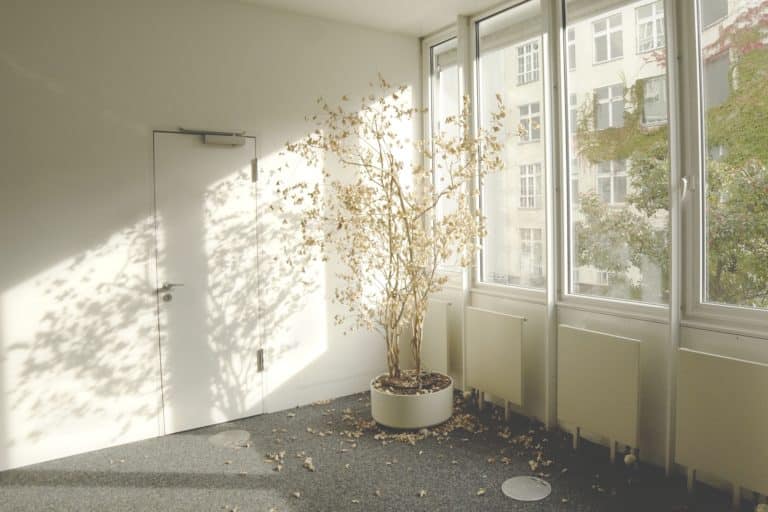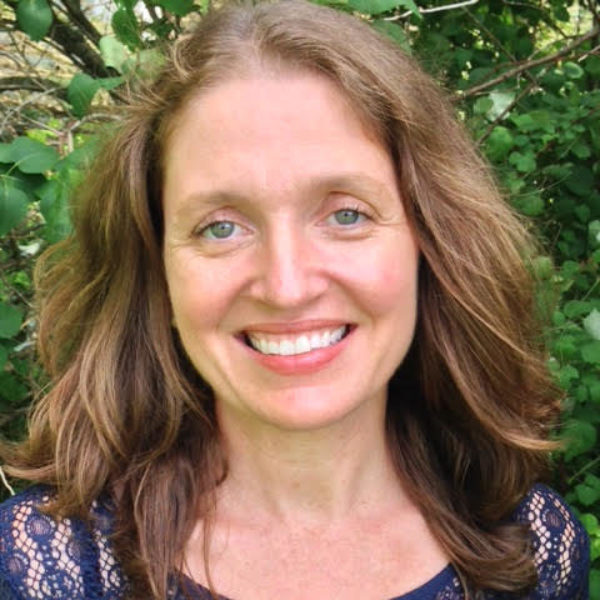
Image by Sam X/Unsplash, Public Domain Dedication (CC0).
A Way Back to the Wildness of Death
Some forty years ago, the French historian Philippe Ariès alerted us to a disquieting truth: Death may be universally feared, but we haven’t always thought to shun it.
There was a time when people died at home surrounded and cared for by kin, when death had a foundational communal presence. Contrast this with our current state of death affairs in which life most often ends in institutions, and the dead are swiftly carted away and cared for by strangers.
Ariès’ The Hour of Our Death offered not only a sweeping history to make sense of this shift from communal to individual death, but a new language for thinking about how we’ve come to deal with our dead altogether. As Ariès saw it, our old shared proximity to death enabled us to “tame” it and make it more knowable. Today, however, our distance from death has undone much of that knowing, rendering death “untamed” or “wild.” “This life,” Ariès lamented, “in which death [has been] removed to a prudent distance seems less loving of things and people than the life in which death was the center.“ If only we could wrench death back from the margins, we could “tame” it once more.
In the U.S., this turn toward “wild” death can be traced back to the 1830s, when a rise in urban population collided with new fears around sanitation, calling for a new separation between the living and the dead. Later, the Civil War gave chemical embalming license to thrive, paving the way for the development of a funeral industry in which the dead, as historian Gary Laderman has said, would “lose their traditional familiar place in the world of family relations.”
Over the last two decades, advocates like myself have been responding to this history with efforts to draw death closer and restore our experience of death as essential to what it means to be human. The National Home Funeral Alliance, a non-profit whose mission is to “empower families to care for their own dead,” currently boasts more than 1000 members from almost all 50 states. And green, or natural, burial practices are on the rise, with about 150 sites across the country.
At its most basic, green burial is whole body earth burial with the use of simple, biodegradable containers. It’s the way we buried our dead before the rise of the funeral industry, and the way some religious traditions, such as Judaism and Islam, have always buried their dead. In the last two decades, this dust to dust burial has been favored for environmental reasons. Sometimes green burials take place in conventional cemeteries and other times on conservation land, but all green burials forgo formaldehyde-based embalming and vaults or liners (most often made from reinforced concrete), demonstrating the value of decomposition and the body’s unimpeded tie to the earth. This philosophy of connection extends beyond the land, too, as green burial fundamentally inspires the involvement of family and friends.
One of the first green burials I attended drew nearly 100 people, and I think it’s fair to say that most, if not all, of them had never been to a green burial before. The family had asked the funeral home to wrap the deceased in his own beloved and well-worn woolen blanket. Rather than leading or directing the group, the funeral director stepped back, making space for more and more people to step up. And one by one they did. Skirting emerging spring ramps and poison ivy vines, the group found their footing. From the effort of many, the woven cobalt and yellow threads of the blanket faded beneath the dusky brown dirt.
Time and again, helping to establish and operate a green burial ground in upstate New York has given me the chance to bear witness to this many-hands-on approach. It’s been a continual reminder of just how accurate Ariès was about our shift from communal to individual death — and how much we’ve lost in the process.
After that well-attended burial, I helped to sell a number of plots to people who’d been there. They talked about how beautiful the burial was and how they wouldn’t have understood what someone else actually meant by that kind of burial had they not been a part of it themselves. In letting go of one another, we’ve sacrificed knowledge, too.
And yet, after countless plot sales and green burials and in talking to others who are doing the same, I’ve hit a wall with this language of taming. Ariès used the word “tame” to mean domesticate, but tame also means “docile and uninspiring.” It means “lacking in spirit,” which seems to be a real reversal of what emerging green burial and family-directed funeral practices are all about.
Many of the burials I’ve been a witness to have evolved into hours-long affairs with cooperative attention to both the body and the burial site. At one burial with about forty people in attendance, everyone – through song, story, or simply tears – was given an opportunity to add their voice. And, more often than not, funeral directors – who in my state of New York are legally required to oversee every burial – have been astonished, and also heartened, by the length and course of some of these wayward vigils.
Their reactions haven’t surprised me. At a conventional burial, when family and friends arrive, the grave has already been shored up by the burial vault, both the vault and the hole concealed by a faux grass drape. The casket is typically already on site, having been transported by funeral personnel. Mourners commonly disperse before the body is lowered into the ground using a pneumatic device. The lid to the burial vault, which has been discreetly positioned nearby, is also secured in their absence, as is the filling in and smoothing out of the grave. And while conventional services certainly vary, especially if they are religious in nature, the funeral director leads the action of these events, while family and friends play a more passive role.
At the green burials I’ve been a part of, nothing is hidden, and family and friends can participate as much or as little as they like. Mourners journey with the deceased by way of a hand-drawn burial cart, while some of those hands later grip the straps that lower the body into the hole. On several occasions I’ve seen that jolt of recognition in people’s faces after an entire grave has been filled in by collective work, mound completed, without as much as a word uttered to make it happen.
In this light, our conventional funeral industry practices are the true exemplars of “tamed” death. Our dead have become ever more under the control of costly, perfunctory, and over-the-top rites, while the bereaved are caged to the parameters of those conventions, yielding to its rules.
Of course, conventional practices or not, some communities have long traditions of caring for their dead in community, including African Americans and some spiritual communities with still intact burial societies, like the Chevra Kadisha, the all volunteer Jewish sacred society that prepares bodies for burial. And it’s not as though there’s never before been resistance to industry artifice. Even before Ariès had us thinking about western attitudes toward death, there was Jessica Mitford’s hard-hitting critique of the industry in The American Way of Death. But for all the change Mitford’s work would bring, her work didn’t help us look to our past – a past in which caring for the dead in community was spun into the fabric of living — for clues to heal what’s in front of us.
While the advocacy I share in today is all about growing different death care for the future, it does also look to our past — not a tamer past, but a wilder one.
Unfortunately, western conceptions of the wild are replete with notions of remoteness and disjunction, the very ones Ariès drew from when he called our contemporary attitude toward death “untamed.” Ideas about wilderness are also tied to the unknown and to the lone, fearless, masculine individual who sets out to make his way into an unforgiving nature – sometimes even seeking ways to overcome it. It’s an old, solitary story, only amplified by early American advocates of nature, like Henry David Thoreau, John Burroughs, and John Muir. It’s a story that still guides American life.
But with every ritual and human gesture I’ve encountered in the world of green burials, I don’t recognize this story at all. Because within that young hardwood forest populated by cherry, beech, and tulip trees, where barberry and garlic mustard compete with sarsaparilla and trout lilies for space on burial mounds, where burial sites are often selected based on the way sunlight filters through the branches or how a particular spot feels as leaves crunch underfoot, the defining feature has been connection.
We can work to corral death, once more, in order to know it better. We can try and re-tame it in order to make it more familiar and make us less fearful. But what green and family-directed death care is slowly showing us is that in order to truly make death more central to how we live, we must heed the call of the wild.
Moving in the direction of the wild could mean planning for a green burial. But in what might appear as the infinitesimal acts of mourners – being with the body as it makes its way to the grave site, lowering it into the ground, and returning the soil to its rightful place – lies the ritual power to together yoke us back, not only to the earth and to each other, but to the bare bones fact that death is an integral — and meaningful — part of life.
It’s no wonder green burial grounds are often set within such wild spaces as woodlands or prairies. Downed limbs, ticks, and deer scat may eschew order and cultivate chaos, but the whole ecology of a green burial ground beckons bonding and the nurturing of fellowship. It calls out to us what’s wild in life and also in death. It invites us, not through memory or reverie but through soil and flesh, to discover what’s still very much wild in us.
